On Monday, April 18, 2016, the Third U.S. Circuit Court of Appeals upheld a series of concussion lawsuits against the NFL, which settled for a near cumulative of $1 billion. The unanimous decision was released in a 69-page ruling that covers more than 20,000 NFL retirees for the next 65 years.
The justification of these lawsuits hinged on the acknowledged link between football and Chronic Traumatic Encephalopathy (CTE)—initially called “Dementia Pugilistica” for its association with boxers, this progressive degeneration of the brain is common among athletes at risk of repetitive brain trauma, be it symptomatic concussions or asymptomatic cranial blows.
Thus entered another three letter acronym to add onto the growing pile of three letter brain-injury acronyms: TBI (Traumatic Brain Injury), TIA (Transient Ischemic Attack), PCS (Post Concussion Syndrome)…
Unfortunately, while financial reparations are being dispensed, other important questions remain unaddressed: What is the NFL doing about neurological reparations?
Perhaps more importantly: What can they do?
Nootropic Neuroprotection
![Hard to believe this leather football helmet was considered "protection" back in the day. See page for author [Public domain], via Wikimedia Commons](https://supplementsinreview.com/wp-content/uploads/2016/04/Leather_football_helmet_circa_1930s-240x300.jpg)
Naturally, their studies were quick to adopt Nootropics—the cognitive-enhancing, neuroprotective class of substances that are making waves in practically every professional industry.
No doubt the NFL-directed concussion research on Nootropics will become a hot topic in other high-risk contact sports—MMA, boxing, soccer, baseball, basketball, etc. etc.—as these substances are showcasing plenty of potential to protect athletic brain health and, consequently, sporting league liability finances.
If the 20th century saw the rise of lab-manufactured pharmaceutical drugs, then the 21st century can be looked at as a “return to form” as more & more clinical attention is being directed towards the use of (primarily) natural, safe, time-tested botanicals, compounds, & chemicals—which are now being dubbed “Nootropics” simply for the sake of scientific legitimacy.
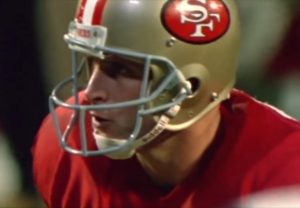
And seeing as an estimated 1.7 million suffer from brain injuries annually (inside & outside the realm of contact sport), the “discovery” of neuroprotective nootropics helps a massive amount of people.
In general, supplementing nootropics is smart and offers plenty of preventive benefits on brain health. However, considering the direction of neuropsychiatric research, we’re sure to see more nootropics on the treatment end of medicine.
Post Concussion Syndrome
If we’re being technical, a Concussion is the incident of “mild traumatic brain injury,” while Post Concussion Syndrome (PCS) is the subsequent complex cascade of neuronal disorders that can lead to weeks, sometimes months of post-concussive symptoms, such as headache, dizziness, & cognitive retardation.
Typically, the severity of the concussion plays no role in the development of PCS, which makes the onset of PCS somewhat of a mystery. Although anyone suffering from concussion can develop PCS, the risk factors associated with PCS are:
- Repeated concussions
- Pre-existing psychiatry disorders
- Being older than 40
- Being a woman
(This last statistic might be attributed to the increased likelihood of women seeking medical care.)
While the underlying biomechanics of concussion are incredibly variable and can differ greatly based on age & gender, the approach to identifying a concussion is fairly uniform. The two basic types of damage incurred during concussion are categorized as A) Structural (torn vessels, tissue, & axons) and B) Functional (changes in blood flow, brain waves, neurotransmitter status).
After the initial testing of cognitive/sensory functions, often times the structural malformities are identified first to determine the physiological source of functional imbalances. From there, physical therapy can be matched with specific treatments & medicines as they pertain to the particular nature of the malformities & imbalances.
PCS Symptoms
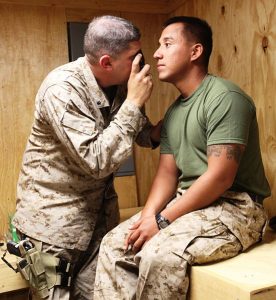
- Headache
- Dizziness
- Fatigue
- Memory Problems
- Vertigo
- Inattention
- Sleeping Problems
- Irritability
- Apathy
- Depression
- Anxiety
- Sensitivity to Stimulation (i.e. lights & noises)
There’s no single diagnosis of PCS, and as such a doctor may request MRI or CT scans to determine the unique nature of each individual case.
In the context of Chronic Traumatic Encephalopathy & sport, the ongoing development of CTE might not manifest itself for years, sometimes decades, making this serious issue a tough one to diagnose, & treat. The worst part: That manifestation may gradually take form as degenerative conditions such as Alzheimer’s and dementia.As of now there’s no known cure. But for mild Traumatic Brain Injuries and general brain health, nootropics show a lot of promise to help.
Can Dietary Supplements Treat Concussions?
According to the Food & Drug Agency (FDA), the answer to that is simply: No! (note the exclamation point).
Due to misleading claims on dietary supplements stating that their product “promotes faster healing after a concussion,” the FDA has began monitoring the marketplace, issuing warning letters to manufacturers who label their supplements as “intended for use in the cure, mitigation, treatment, or prevention of disease.”
The reason for this: Dietary supplements (including many nootropics) aren’t intended to treat health conditions. That’s the reserved role of medicine—or at least substances recognized by the FDA as “medicinal.”
Which isn’t to say that dietary supplements & nootropics can’t help treat health issues. Many nootropics are clinically supported for any number of ailments and are thus receiving more & more attention as viable treatment options due to their vastly higher safety profiles when compared to the side effect-ridden pharmaceutical drugs.
Again, by no means are we issuing a medical statement here, advising you to substitute physician care with an online article… but adding these brain-healthy nootropics on top of your clinical experience might reduce your recovery time & aid your return back to health.
TBI Nootropics
The range of nootropics as potential neuroprotective compounds for concussion is clinically small (key word: “potential”), yet the neuroprotective qualities of these nootropics are backed by a lot of preclinical, preliminary research—at least enough to warrant their continued research & use for TBI conditions.
Bear in mind that without adequate clinical support, many of these nootropics aren’t clinically recommended to treat brain injuries, but, for the time being, they are generally recommended to offer structural & functional brain support.
Here we’ve divided the BEST nootropics for TBI based on their primary Structural or Functional supportive roles (as we’ve previously mentioned, general practice targets structure before function):
Nootropics for Structural Support
Omega-3 Fatty Acids
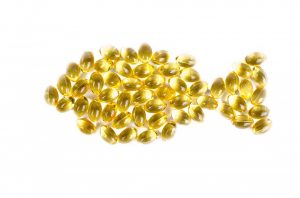
Omega-3 & Omega-6 polyunsaturated fatty acids are important structural components to cell membranes for their facilitation of membrane fluidity, thickness, intracellular signaling, and cellular permeability. In particular, the Omega-3 Docosahexaenoic (DHA) & Eicosapentaenoic(EPA) Acids are subjects of increasing interest among the neuropsychiatric communities for their predominant influence on the Central Nervous System.
DHA & EPA play important roles in adolescent brain development and remain in high demand through the ongoing development of new memories & neuropathways. In the context of improving TBI, many preclinical studies have suggested that DHA & EPA serve diverse, yet complementary neuroprotective benefits when supplemented together—however, a majority of these studies were only performed on animal models.
Collectively, human studies are hard to interpret due to the difficulty of controlling for dietary intake of fatty acids between experimental & control groups, in addition to overwhelmingly poor study designs on the subject. Yet, the overwhelmingly positive preclinical results warrant the use & continued research of DHA & EPA on TBI conditions.
Phosphatidylserine (PS)
![Sunflowers are the new "soy-free" source of PS. By Jason Pratt (FishSpeaker) (self-made; also on Flickr as Sunflower) [CC BY 2.0], via Wikimedia Commons](https://supplementsinreview.com/wp-content/uploads/2016/04/546px-SunflowerAgainstBlueSky-273x300.jpg)
- Increased neurotransmitter synthesis
- Enhanced electrical brain cell communication (i.e. brainwaves)
- Fewer toxins crossing neural membranes
While clinical research hasn’t yet caught up with PS’s specific benefits on TBI, its remarkable neuroprotective effects on neurodegenerative diseases bode well for its use in post-concussional treatment.
Citicoline
Topping the list of multi-tasking nootropics, Citicoline rejuvenates brain health via various neuroregenerative, neuroprotective, neurotransmitter mechanisms. Due to its clinical relevance in cerebral ischemia therapy, Citicoline naturally draws attention as a potential neuroprotective agent for TBI.
Citicoline acts primarily as a “choline donor” due to its precursor status for two important cholines:
- Phosphatidylcholine (PC). The foundational “building block” for neurons. An extra supply of this stuff helps create new brain cells, as well as repair & stabilize old, damaged brain cell membranes.
- Acetylcholine (AC). The neurotransmitter most associated with the cognitive “cholinergic” functions of learning, memory processing & recall. Due to this, Citicoline is a popular item among degenerative brain conditions that see marked decrease in Acetylcholine levels.
Puzzingly, in the Citicoline Brain Injury Treatment (COBRIT) Trial, Citicoline had no significant effect on TBI measures. We say “puzzingly” because this nootropic is essentially at the forefront of neuroregenerative, brain-optimizing substances—which are in particular demand under neurological/cognitive impairments.
Due to this, Citicoline remains a hot topic nootropic for TBI, both as a neuroprotector & neuroregenerator.
Pramiracetam
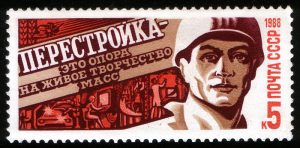
In a Russian study on the application of nootropics on patients with “mild craniocerebral trauma” (concussion), the effects of Piracetam & Pramiracetam were compared to see which Racetam offered greater improvements on TBI side effects & conditions. By and large, Racetams are believed to generally enhance cognitive function via structural support of cholinergic (i.e. Acetylcholine) & glutamate pathways.
While both groups noted considerable improvements on side effects (“disappearance of headache, dizziness, and nausea”), the Pramiracetam group showed a greater restoration of orientation & feeling, in addition to reductions of amnesia. Admittedly, the study suffers from its lack of a control group with which to compare against both Piracetam & Pramiracetam—however, the clinical effects of Piracetam (and Racetams in general) have previously been vastly studied, showing improvements in cognition (memory, attention, executive functions) and motor coordination—even under TBI conditions.
Epigallocatechin-3-Gallate (EGCG)
![By McKay Savage from London, UK (China - Chengdu 22 - green tea) [CC BY 2.0], via Wikimedia Commons](https://supplementsinreview.com/wp-content/uploads/2016/04/800px-China_-_Chengdu_22_-_green_tea_140902695-300x225.jpg)
- L-Theanine, as well, deserves special praise for its multiple neuroprotective, cognitive-enhancing effects, showing improvements in memory & attention in a double-blind, placebo-controlled study on subjects with mild cognitive impairment. For this reason, pursuing EGCG shouldn’t be in neglect of green tea’s other health compounds.
TBI victims may benefit from EGCG & other green tea compounds for their optimized effects on neuronal function—however, due to the caffeine content of green tea, it’s generally advisable to supplement these compounds as standalone ingredients to avoid the purported neurological impairments involved in post-concussively consuming caffeine.
Nootropics for Functional Support
Resveratrol
In addition to providing false justification for drink too much red wine, Resveratrol, the cardioprotective compound found in grapes & peanuts, has been receiving increasing attention for its anti-oxidant properties and its suggested resistance to neurodegeneration (in animal models). Thus, most scientific explorations into Resveratrol have concluded that the phytochemical requires both pre- & post-traumatic supplementation for you to receive its maximum neuroprotective benefits.
While no human trials have yet investigated its specific treatment benefits on TBI, other studies have confirmed its capabilities of increasing cerebral bloodflow & reducing inflammation. Whether the underlying mechanism operates via vascular or neuronal pathways remain unknown—the finding of which might fully illustrate Resveratrol’s neuroprotective potential on TBI.
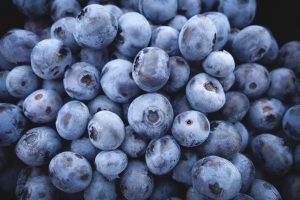
While Resveratrol has been receiving plenty of attention as a TBI neuroprotector, its close cousin Pterostilbene deserves some love as well. As one of the Dr. Oz antioxidants (that he actually got right), Pterostilbene is essentially an “analogue” of Resveratrol, relaying a similar chemical structure and similar bioactivities on the brain.
But the BIGGEST difference: Pterostilbene is 4 times more bioavailable than Resveratrol.
Curcumin
![Turmeric Powder. By Sanjay Acharya (en-wikipedia) [GFDL or CC-BY-SA-3.0], via Wikimedia Commons](https://supplementsinreview.com/wp-content/uploads/2016/04/599px-Turmeric-powder-300x300.jpg)
N-Acetyl-Cysteine (NAC)
Perhaps due to its deathly aroma and its “sulfurous” side effects, N-Acetyl-Cysteine (NAC) is vastly overlooked as a nootropic. Primarily utilized to prevent asthma attacks and to protect the liver from steroids & acetaminophen overdose, NAC is gaining traction in the psychiatric department for its anti-oxidant, anti-inflammatory neurotropic effects—a promising recipe of effects for TBI victims.
Our current understanding of NAC’s TBI neuro-benefits is limited to an animal study, which found that “early post-injury treatment with N-Acetyl Cysteine (NAC) reversed the behavioral deficits associated with TBI,” and a double-blind, placebo-controlled study that observed NAC’s reduced effects on markers of dizziness, hearing loss, headache, memory loss, disturbed sleep, & cognitive dysfunction following “war time” blast induced TBI at a field hospital in Iraq.
Aside from alleviating concussive symptoms, the multi-functional roles of NAC make it an interesting subject of neurotherapeutic research.
Creatine
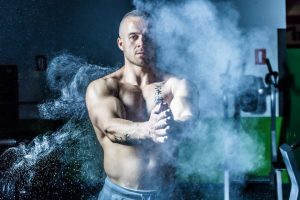
Favored by athletes for its strength & muscle mass producing effects, Creatine plays an integral role on the maintenance of cellular energy in tissues subjected to high, fluctuating energy demands—which includes skeletal muscle and the brain. Aside from its athletic purposes, CNS Creatine deficiency has been associated with neurological impairment, which explains its clinical use in psychiatry medicine.
Both preclinical rat models & a pediatric pilot study support the administration of post-traumatic Creatine based on its suggested acute & long-term improvements in cognition, personality, behavior, self-care, & communication. Admittedly, most of the research remains preliminary, but the initial studies have only encouraged the use of creatine supplementation under post-traumatic & post-concussive scenarios.
Vitamins E + C + D
![Wishful thinking... By The U.S. Food and Drug Administration (Ad for "Vitamin Donut" (FDA 168)) [Public domain], via Wikimedia Commons](https://supplementsinreview.com/wp-content/uploads/2016/04/340px-Ad_for_-Vitamin_Donut-_FDA_168_8212305596-170x300.jpg)
- Vitamins E + C. Vitamin E deserves special attention here for its high concentration in brain tissue. One rat study suggests that Vitamin E reduces the oxidative stress enacted on the brain following “repetitive concussive brain injury.” The inclusion of Vitamin C is believed to enhance the effects of Vitamin E on severe head injury.
- Vitamin D. While the functional role of Vitamin D on the CNS remains relatively elusive, D-deficiency has been linked to a number of neurocognitive ailments. Vitamin D supplementation and prevention of Vitamin D-deficiency are important considerations when treating TBI.
The scientific literature on vitamins & TBI is fairly inconsistent, but this may be in part due to a difference in initial vitamin levels of the test subjects—which harkens back to the idea that depending on your diet, you may or may not be at risk of vitamin deficiency.
Scutellaria Baicalensis
![Scutellaria Baicalensis. By Doronenko (Own work) [GFDL or CC BY 3.0], via Wikimedia Commons](https://supplementsinreview.com/wp-content/uploads/2016/04/Scutellaria_baicalensis_flowers-240x300.jpg)
Lifestyle TBI Recovery
Most people recover from a concussion, especially if their experiencing their first (and hopefully only) concussion. However, the speed of recovery is determined by a number of behavioral factors—the main one being Rest.
And “Rest” in the context of TBI can be measured by a few variables:
Sleep
The old theory on sleeping after a concussion was that a recently concussed person might slip into a coma if allowed to sleep on the night of the concussion.
But that’s the old theory.
Now, we know that there’s no need to force patients to stay awake 24 hours following TBI as sleep plays an important role in immediate brain recovery. But there are exceptions to this notion: If the injured person can’t hold a conversation, has dilated pupils, has trouble walking, or showcases any other odd symptoms & behaviors, then he/she may be required to be woken periodically, upon doctor recommendation.
Low BPM
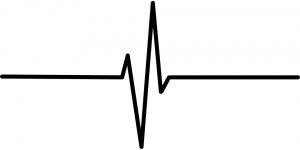
Maintaining a “low heart-rate below 100 bpm” is another way of saying “no exercise.” This is especially pertinent to athletes & workaholics who attempt to “tough it out” through their head symptoms, which may significantly exacerbate their symptoms and greatly lengthen recovery time.
Needless to say, this includes abstaining from roller coasters, raves, & weekend gator-wrassling down at the swamp (assuming that’s what you’re into).
No Electronic Stimulation
Ironically, this might actually give you a headache just thinking about it… Limiting your time with the TV, computer, smart phone, tablets, gaming consoles, etc. is an important step to recovery as these activities can enact tough neurological demands on the brain, which runs contrary to our idea of “Rest.”
As a funny side note: A 2005 Canadian study conducted on 11-17 year old hockey players found that playing a hockey video game resulted in significantly higher scores on a concussion symptoms questionnaire, indicating that the game possessed educational value in regards to TBI… So, moral of the story: Prepare yourself with video games…?
Conclusion
Due to the incomplete nature of nootropic research (at least within the context of TBI), many readers might disagree with what we included or didn’t include in this article. For instance, neuroregenerators such as Lion’s Mane & Huperzine-A are commonly discussed as potential post-concussional nootropics—unfortunately, research backing their use for TBI is currently sparse.
This doesn’t mean that they might not serve potential neuroprotective functions under such conditions. Realistically, many TBI victims are seemingly already turning to these safer compounds to escape the rampant negative side effects of prescription drugs.
Yet, ultimately, when you’re concussed, you’re concussed. And no matter how you spin it, you’re likely to experience negative effects. Even with nootropics, you can’t control that.
But with nearly $1 billion floating around the pockets of former NFL athletes, let’s hope they invest that money in identifying the full potential of nootropic neuroprotection (rather than extra padded helmets).
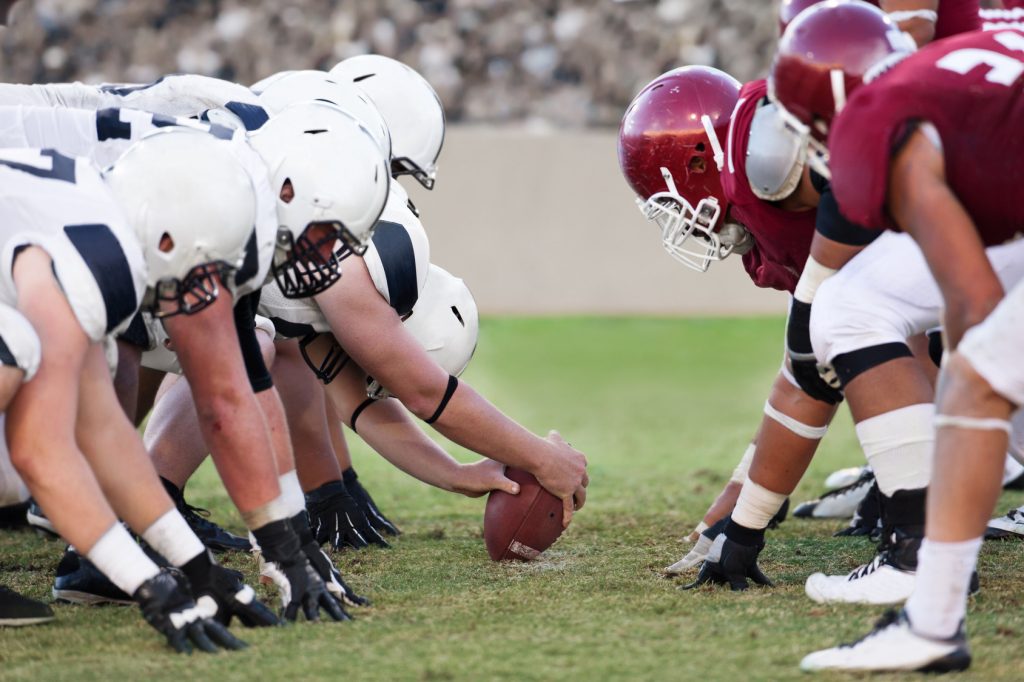
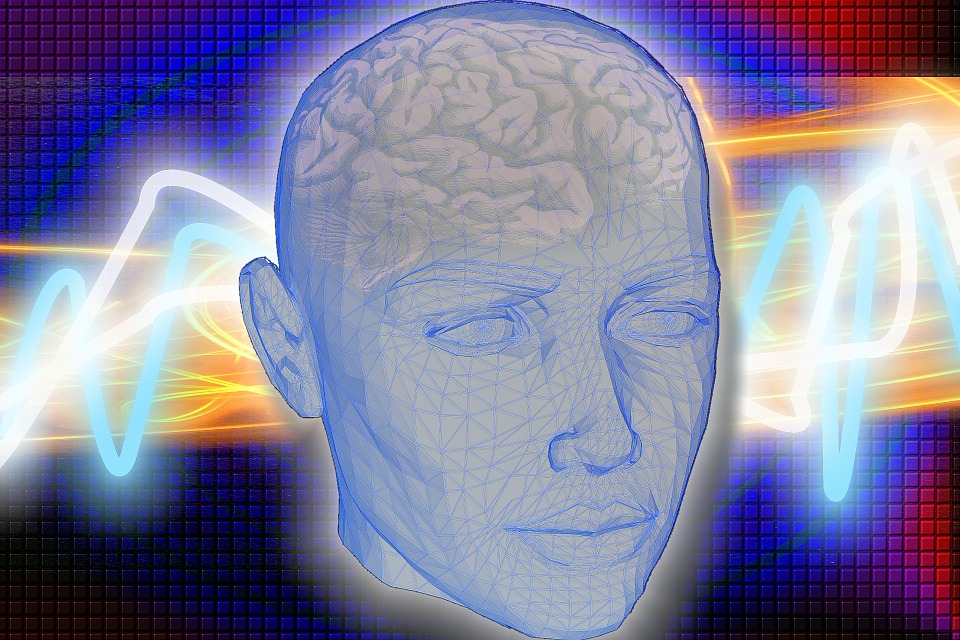
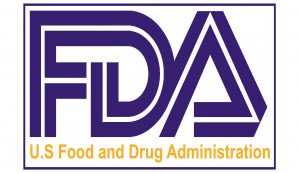
Hi. I have traffic induced cerebral damage that influences my memory and cognitive capabilities.
I already have Choline tartrate, Tumeric (curcumin), Fish oil, Creatine, Green Tea & Noopept.
My question is; after googling some of the other ingredients, that I haven’t mentioned, I was curious if the choline itself acts like the other acetyl-choline related precursors? I have 500g+ so I’m capable of taking any amount.
thanks